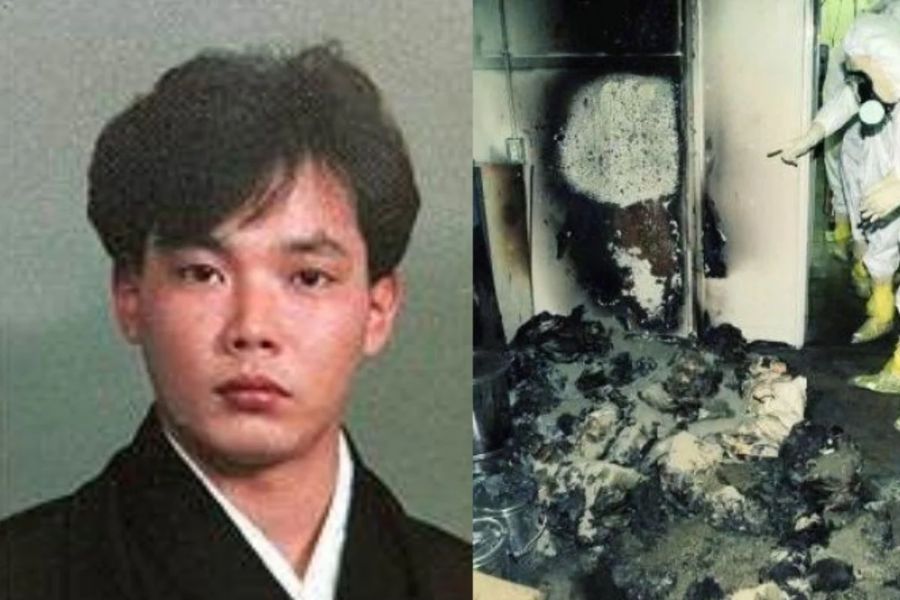Understanding Hisashi Ouchi's Face: The Story Behind A Tragic Incident
Hisashi Ouchi's face became a symbol of the tragic consequences of a nuclear accident that occurred in Japan in 1999. This incident not only changed the lives of those directly involved but also raised significant concerns about nuclear safety and the human cost of industrial disasters. In this article, we will explore the details surrounding Hisashi Ouchi's life, the accident that led to his suffering, and the broader implications for society.
The story of Hisashi Ouchi is a somber reminder of the risks associated with nuclear energy. On September 30, 1999, Ouchi was one of the workers at a nuclear facility in Tokaimura, Japan, who was involved in a criticality accident. This event resulted in severe radiation exposure, leading to a long and painful battle for survival. Understanding Ouchi's face, both literally and metaphorically, involves delving into the effects of radiation and the human spirit's resilience in the face of adversity.
In this comprehensive article, we will discuss Ouchi's background, the details of the accident, and the medical response to his injuries. We will also analyze how this incident impacted nuclear policy in Japan and its implications for the future of energy production. Join us as we unravel the story of Hisashi Ouchi, a man whose face tells a powerful story of tragedy, resilience, and the quest for safety in the face of technological advancement.
Table of Contents
- Biography of Hisashi Ouchi
- The Tokaimura Accident
- Medical Response and Treatment
- Aftermath of the Incident
- Nuclear Safety Reforms in Japan
- Public Awareness and the Human Cost of Nuclear Energy
- Conclusion
- Sources and References
Biography of Hisashi Ouchi
Hisashi Ouchi was born in Japan in 1965 and worked as a technician at a uranium processing facility. He was known for his dedication and commitment to his job, contributing to Japan's energy industry. Ouchi's life took a dramatic turn on that fateful day in September 1999, marking the beginning of a harrowing journey.
| Personal Information | Details |
|---|---|
| Name | Hisashi Ouchi |
| Date of Birth | 1965 |
| Occupation | Technician |
| Incident Date | September 30, 1999 |
| Location | Tokaimura, Japan |
The Tokaimura Accident
The Tokaimura accident was a criticality accident that occurred at a uranium processing facility operated by JCO Co. The incident happened when workers, including Hisashi Ouchi, improperly mixed uranium fuel, leading to a chain reaction. As a result, a massive amount of radiation was released into the environment, affecting Ouchi and two other workers.
Key details of the accident include:
- The improper handling of uranium at the facility.
- A failure to follow safety protocols and guidelines.
- The immediate exposure of Ouchi and his colleagues to lethal doses of radiation.
Medical Response and Treatment
Following the accident, Hisashi Ouchi was rushed to the hospital, where he received emergency medical attention. The severity of his radiation exposure was unprecedented, leading to extensive burns and damage to his internal organs.
The medical response involved:
- Intensive care and monitoring of Ouchi's condition.
- Experimental treatments aimed at mitigating radiation damage.
- A lengthy hospitalization that lasted for several months.
Despite the efforts of medical professionals, Ouchi faced numerous challenges, including infections and organ failure. His condition served as a stark reminder of the potential consequences of radiation exposure.
Aftermath of the Incident
The aftermath of the Tokaimura accident was profound. It not only affected Ouchi's life but also raised significant concerns about nuclear safety in Japan. The incident prompted a reevaluation of safety measures in nuclear facilities and led to increased scrutiny of the industry.
Some of the key impacts included:
- Changes in safety regulations and protocols in nuclear facilities.
- Increased public awareness of the risks associated with nuclear energy.
- A reexamination of Japan's energy policies and reliance on nuclear power.
Nuclear Safety Reforms in Japan
In response to the Tokaimura accident, the Japanese government implemented several nuclear safety reforms. These reforms aimed to improve safety standards and prevent similar incidents from occurring in the future.
Important reforms included:
- Stricter regulations on the handling of nuclear materials.
- Enhanced training programs for workers in the nuclear industry.
- Increased transparency and communication with the public regarding nuclear safety.
Public Awareness and the Human Cost of Nuclear Energy
The Tokaimura accident significantly impacted public perception of nuclear energy. Ouchi's story and the tragic consequences of the incident highlighted the human cost associated with nuclear power. This raised questions about the balance between energy production and safety.
Key factors in public awareness included:
- The media's role in reporting on the incident and its aftermath.
- Increased advocacy for renewable energy sources as alternatives to nuclear power.
- A growing movement for accountability and transparency in the nuclear industry.
Conclusion
Hisashi Ouchi's face is a powerful symbol of the tragic consequences of the Tokaimura accident. Through this article, we explored his biography, the details of the accident, and the medical response to his injuries. The incident not only changed Ouchi's life but also had far-reaching implications for nuclear safety in Japan.
As we reflect on this tragic story, it is essential to advocate for safety, accountability, and a commitment to preventing such incidents in the future. We encourage readers to leave their thoughts in the comments below, share this article, or explore more on nuclear safety and energy policies.
Sources and References
For further reading and reliable information, please refer to the following sources:
- Japan Atomic Energy Agency reports on nuclear safety.
- Academic articles on the Tokaimura incident and its aftermath.
- Documentaries covering the impact of the nuclear industry in Japan.
Exploring The Life Of Bill Paxton's Wife: A Tribute To Louise Newbury
Sophrdrg Erome: Exploring The Life And Impact Of An Influential Figure
Unraveling The Mystery: The Crime Scene Photos Of Gypsy Rose's Mom


